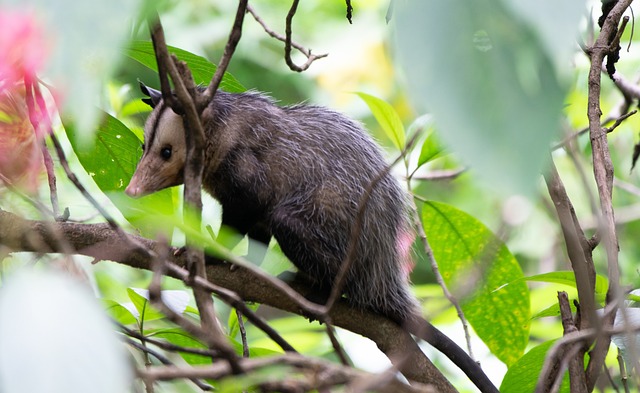
As a homeowner, you want to ensure that your home is a safe and secure place for you and your family to live. Unfortunately, unwanted critters can invade your home and cause damage to your property, as well as pose health risks to your family. In this article, I will guide you through the basics of wildlife removal, including why it is important, the types of animals that commonly invade homes, how to identify signs of a wildlife problem, and the best methods for keeping your home critter-free.
Why is Wildlife Removal Important?
Wildlife removal is important for several reasons. Firstly, unwanted animals can cause damage to your property, including chewing through electrical wires, tearing up insulation, and damaging your home’s structure. This can lead to costly repairs and even put your home at risk of fire or collapse.
Secondly, certain animals, such as raccoons and rodents, can carry diseases that can be dangerous to humans. These diseases can be transmitted through contact with animal feces, urine, or saliva, as well as through bites or scratches.
Finally, having unwanted animals in your home can be stressful and disruptive to your daily life. The sounds of animals scratching and scurrying around your walls or attic can be unsettling, and the fear of encountering a wild animal can make it difficult to relax in your own home.
Types of Animals that Commonly Invade Homes
Many different types of animals can invade your home, each with its own unique set of behaviors and habits. Some of the most common animals that homeowners may encounter include:
Raccoons
Raccoons are nocturnal animals that are known for their distinctive black and white markings. They are opportunistic feeders and will eat almost anything, including garbage, pet food, and garden vegetables. Raccoons are excellent climbers and can easily gain access to your home’s roof or attic.
Squirrels
Squirrels are small, agile rodents that are known for their bushy tails and ability to climb trees. They are attracted to homes because of the abundance of food and nesting opportunities. Squirrels will often chew through wires and insulation to gain access to the warm, dry space inside your walls or attic.
Rats and Mice
Rats and mice are common household pests that can cause a variety of problems. They are attracted to homes because of the abundance of food and shelter. Rats and mice can carry diseases that can be dangerous to humans, as well as chew through wires and insulation, causing damage to your home.
Bats
Bats are nocturnal animals that are known for their ability to fly. They are attracted to homes because of the abundance of insects that can be found in and around the property. Bats can roost in attics or crawl spaces, and their droppings can pose a health risk to humans.
Signs that You Have a Wildlife Problem
There are several signs that you may have a wildlife problem in your home. These include:
Strange Noises
If you hear scratching, scurrying, or thumping noises coming from your walls or attic, it could be a sign that you have unwanted animals living in your home.
Droppings or Urine
Animal droppings or urine can be a telltale sign that you have a wildlife problem. These may be found in your attic, crawl space, or other areas of your home.
Chewed Wires or Insulation
If you notice that your wires or insulation have been chewed, it could be a sign that an animal has gained access to your home.
Damage to Property
Unwanted animals can cause damage to your property, including tearing up insulation, chewing through drywall, and damaging your home’s structure.
DIY Wildlife Removal Methods
While it may be tempting to try to remove unwanted animals from your home on your own, it is important to remember that wildlife removal can be dangerous and should only be attempted by trained professionals. However, there are some steps that you can take to prevent wildlife from entering your home in the first place. These include:
Seal Entry Points
Inspect your home for any gaps or holes that animals could use to gain access. Seal these entry points with caulk, steel wool, or other materials.
Remove Food Sources
Keep your garbage cans securely closed and store pet food in airtight containers. This will help to eliminate potential food sources that could attract unwanted animals.
Trim Trees and Shrubs
Trim trees and shrubs that are close to your home, as they can provide easy access for animals to climb onto your roof.
Use Repellents
There are a variety of natural and chemical repellents that can be used to deter animals from entering your property. These include motion-activated sprinklers, predator urine, and ultrasonic devices.
Choosing the Right Wildlife Removal Service
If you have a wildlife problem in your home, it is important to choose the right wildlife removal service to ensure that the problem is resolved safely and effectively. When choosing a wildlife removal service, consider the following factors:
Experience and Expertise
Choose a wildlife removal service that has experience dealing with the specific type of animal that is causing the problem in your home.
Licensing and Insurance
Make sure that the wildlife removal service you choose is licensed and insured, as this will protect you in the event of any damage or injuries that may occur during the removal process.
Humane Practices
Choose a wildlife removal service that uses humane practices to ensure that animals are removed safely and without unnecessary harm.


